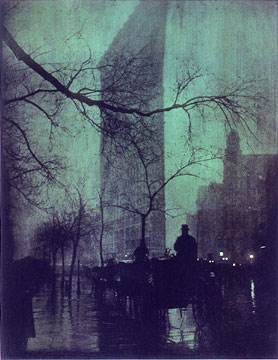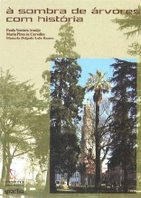Edward Steichen
Achei de sobremaneira interessante a fotografia Pond-Moonlight que, na quarta-feira passada, atingiu o novo recorde da fotografia mais cara do mundo . E não é a única composição deste autor em que as silhuetas de árvores assumem um papel essencial.
Entretanto fiquei também agradavelmente surpreendida (a ignorância proporciona-nos destas surpresas) quando descobri que Edward Steichen foi o responsável por "The Family of Man" , exposição no Museu de Modern Art, em 1955 - que está na origem do maravilhoso e comovente livro homónimo, um dos favoritos da minha adolescência. Como nos conta Carter B. Horsley , Steichen considerava ser essa exposição de fotografia a sua obra mais conseguida:
«During his long career, he not only excelled in many different genres, creating masterpieces in all, but he also was exceedingly influential as a curator of photography at the Museum of Modern Art and as a fashion and celebrity photographer for Vogue and Vanity Fair magazines in the 1920's and 1930's and he also was an important adviser to the U. S. military in documentary photography during both World Wars.
"The Flatiron," by Edward Steichen, 1904 To many, his greatest achievements, of course, are his early Tonalist works, which were very important in elevating photography into a fine art form, and his celebrity portraits that stylistically used strong shadows and unusual angles to highlight his subjects and would have enormous influence on all subsequent fashion and art photography. Steichen, however, considered his greatest achievement his mounting of "The Family of Man" photography exhibition at the Museum of Modern Art in 1955.» (...)
To many, his greatest achievements, of course, are his early Tonalist works, which were very important in elevating photography into a fine art form, and his celebrity portraits that stylistically used strong shadows and unusual angles to highlight his subjects and would have enormous influence on all subsequent fashion and art photography. Steichen, however, considered his greatest achievement his mounting of "The Family of Man" photography exhibition at the Museum of Modern Art in 1955.» (...)
«"Steichen's richly toned, evocative photographs reflected the yearning in the early years of the twentieth century to escape from the crass materialism and rationality of the everyday world into a space of quiet meditation. Pessimism in the late nineteenth century about traditional religions and technological progress had given rise to an almost spiritual belief in intuition and the creative possibilities of the individual. Many artists turned to intense, private experience for subject matter, embracing the transient imagery of dreams and the luminous mysteries of nature. The result was an art of withdrawal and detachment from the rational world, an art that eschewed precision in favor of mystery, reason in favor of reverie. The elusive, expression of dreamlike moods which Steichen achieved by exploiting softly nuanced, shallow space echoed the sensibility of British Aestheticism and of French Symbolism - movements which other Pictorial photographers also used as models for the portrayal of subjective, metaphysical truths,"» in Edward Steichen de Barbara Haskell (Whitney Museum of American Art) citada por Carter B. Horsley aqui





4 comentários :
Sempre um encantamento, lá fui seguindo as pistas de mais uma forma de arte e um autor que desconhecia. Alguém já se lembrou de coligir um livro sobre "Os artistas e as árvores"? É que de repente a gente lembra-se de tantas formas de as amar! Obg.
EP
Manuela L D Ramos
veja o que fizeram a carvalhos centenários.
http://antoniopovinho.blogspot.com/
ah
Desculpe não ter pedido antes.
Usei um post seu.
http://antoniopovinho.blogspot.com/2006/02/nas-carvalhas.html
Obrigado
e agora o que podemos fazer?
Enviar um comentário